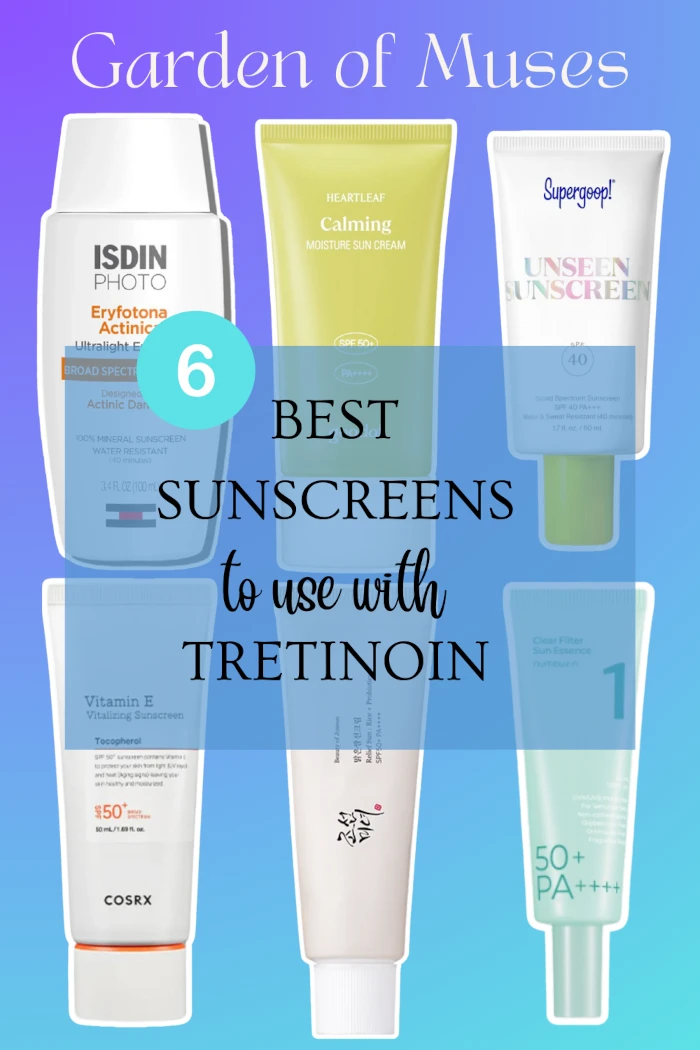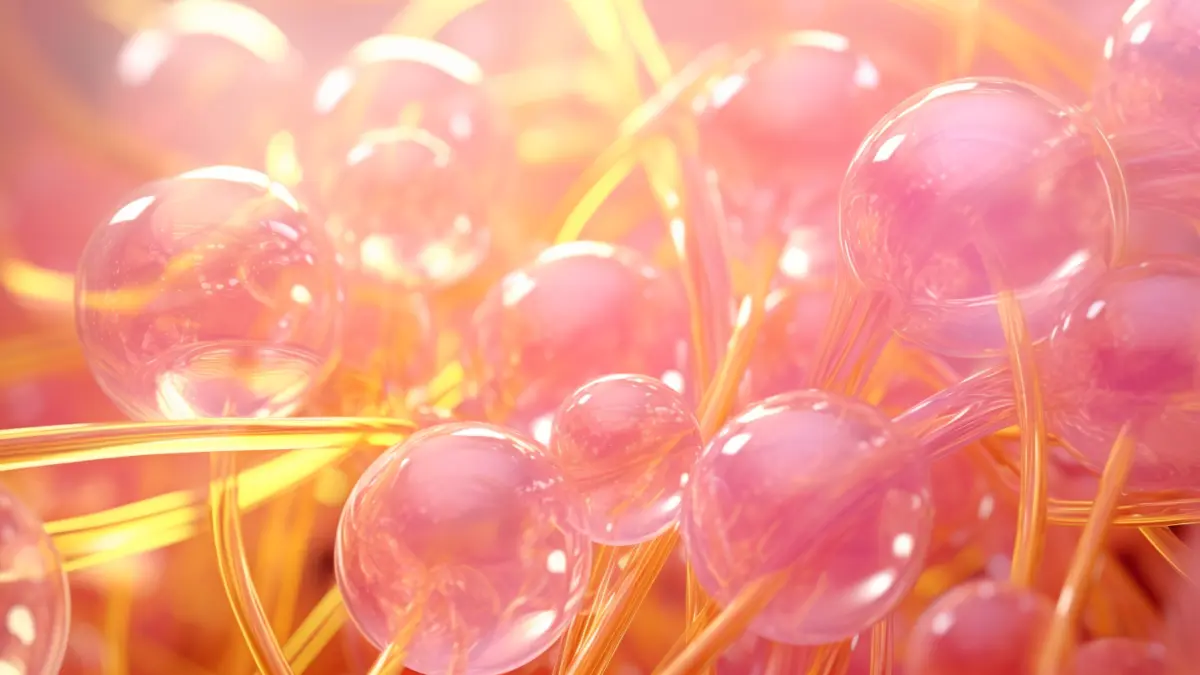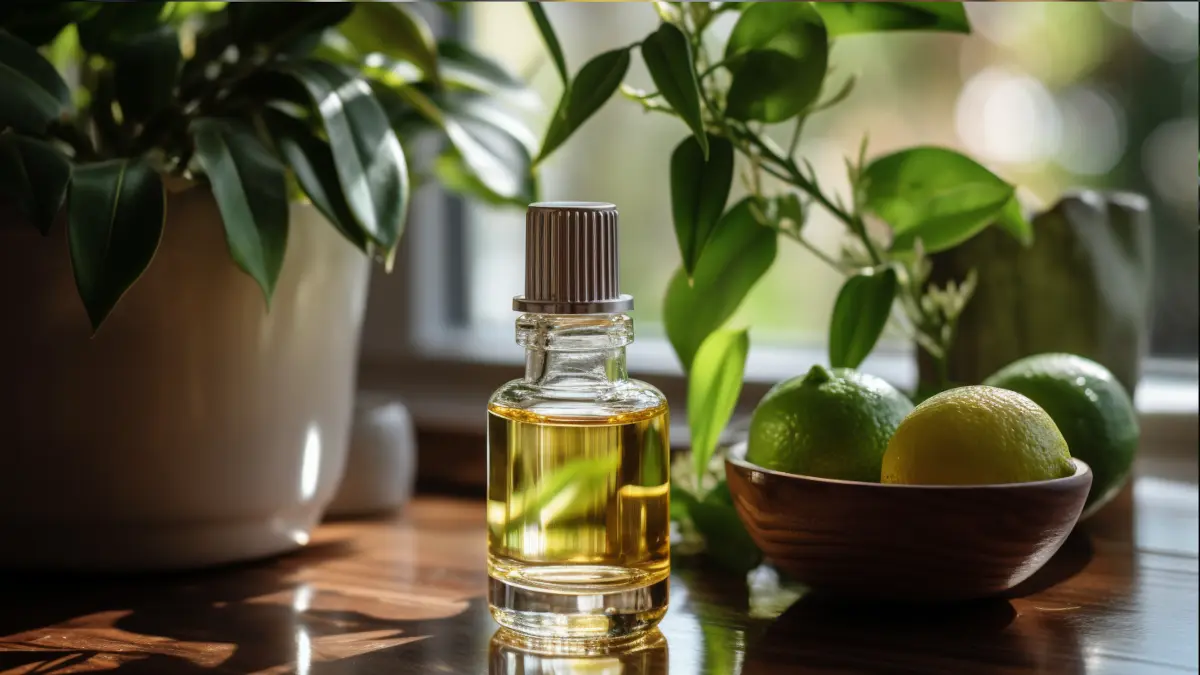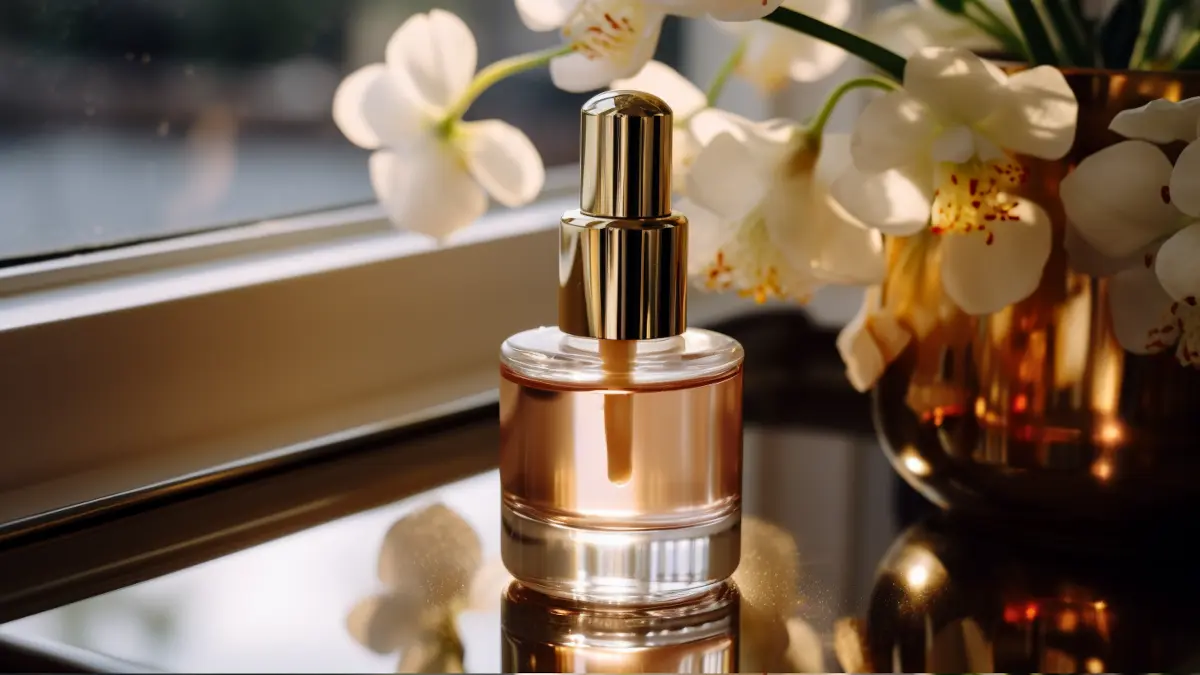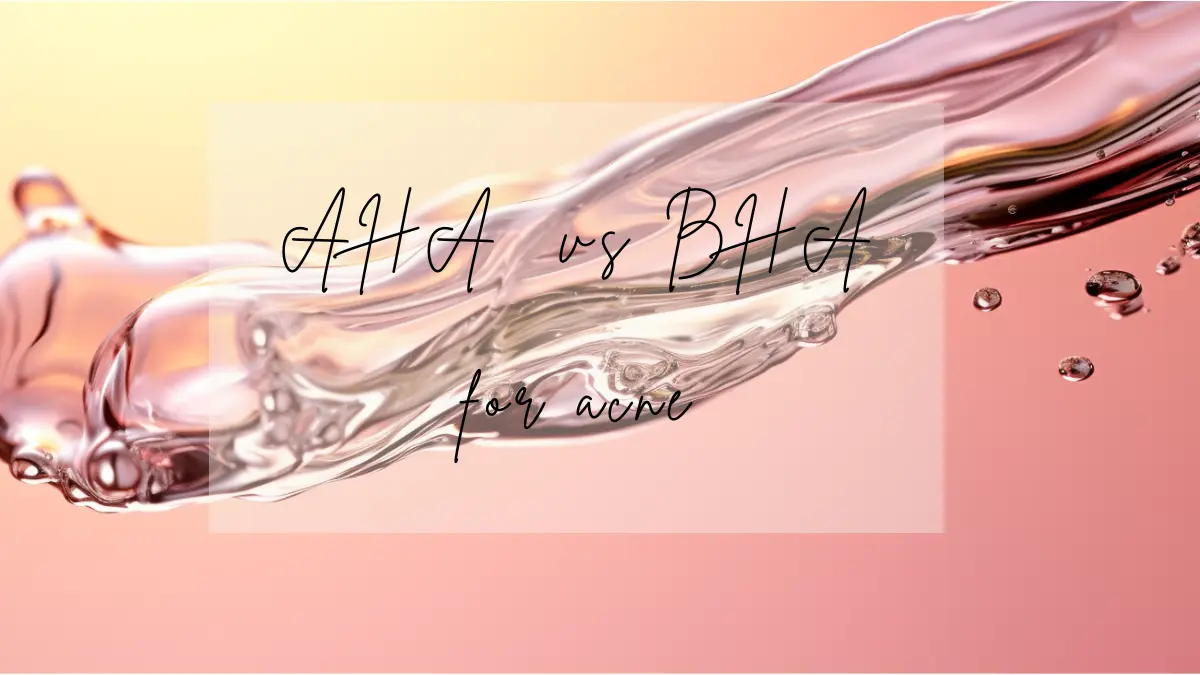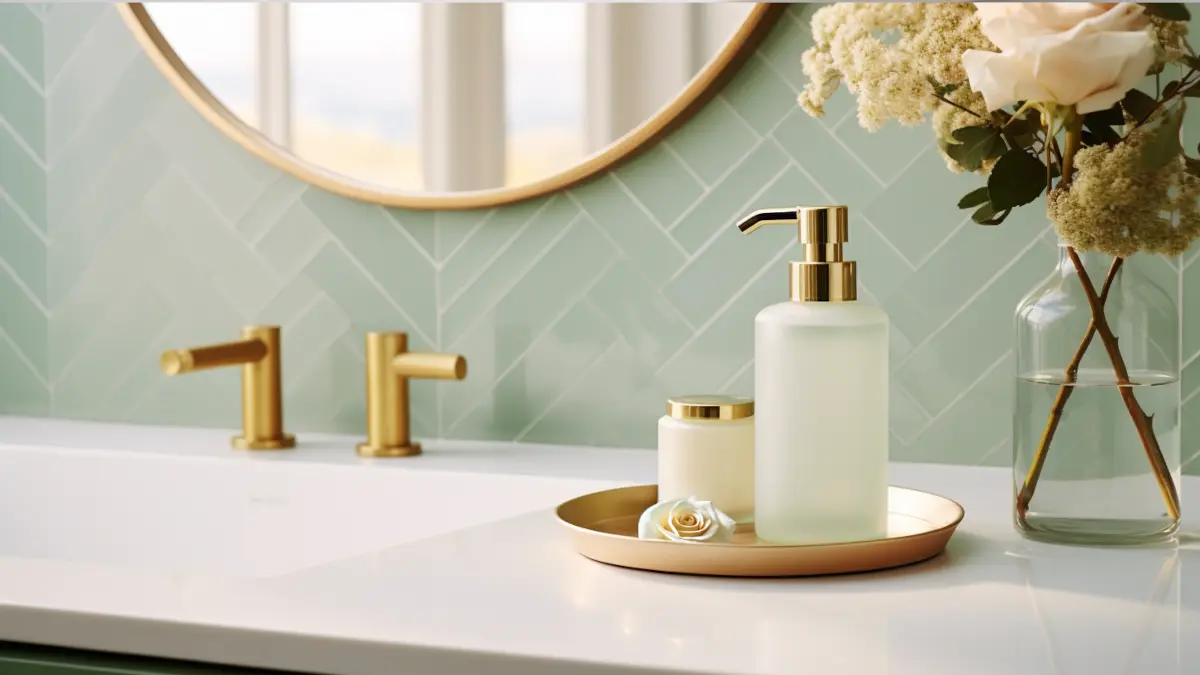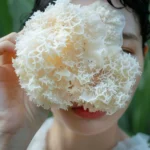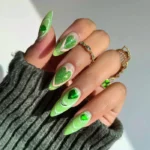There’s a skincare acid that you should include in your skincare routine if you want to reduce breakouts and fade acne scars. I am not gate-keeping it anymore; it’s mandelic acid.
Read on to discover everything you need about how mandelic acid benefits the skin and how to incorporate this skincare acid to fight acne.
The Guide to Mandelic Acid Benefits
- What Is Mandelic Acid?
- Mandelic Acid Benefits for the Skin
- What Skin Type Is Mandelic Acid Best Suited For?
- Does Mandelic Acid Cause Purging?
- Does Mandelic Acid Help Acne Scars?
- How Long Does It Take for Mandelic Acid To Work?
- Mandelic Acid vs. Salicylic Acid for Acne
- Can You Use Salicylic Acid and Mandelic Acid Together?
- Best Skincare Products with Mandelic Acid
What Is Mandelic Acid?
First of all – what is mandelic acid?
In chemical terms, mandelic acid is classified as an alpha-hydroxy acid (AHA), a group of water-soluble chemical compounds that can exfoliate dead skin cells from the uppermost layers of the skin.
Mandelic acid is derived from bitter almonds, and it differs from other types of alpha-hydroxy acids because of its large molecular size, making it less irritating as it cannot penetrate as deeply into the skin as glycolic acid and lactic acid, which has much smaller molecular sizes.
Although mandelic acid isn’t as widely used in skin care products as other AHAs, and there isn’t as much research focusing on this skincare ingredient, its larger molecular size makes it a fitting choice for people with sensitive skin.
As well as being able to exfoliate dead skin cells, mandelic acid has anti-fungal, anti-inflammatory, anti-bacterial, and skin-brightening properties – all beneficial for acne-prone skin.

Mandelic Acid Benefits for the Skin
Exfoliation
Mandelic Acid exfoliates the skin by accelerating the turnover of skin cells, which smooths the appearance of rough skin.
Treats Hyperpigmentation
Over the long term, the increased cell turnover can improve the appearance of pigmentation, sun damage, and acne scarring.
A review in Clinics in Dermatology1 further affirms that mandelic acid is an AHA that can treat signs of photoaging, including skin roughness and fine lines.
It brightens your skin, giving you that glow!
Moisturizing
Naturally moisturizing and hydrates skin, making wrinkles appear less visible.
Anti Aging
It can improve skin elasticity.
Antioxidant
According to research published in the Tetrahedron2, mandelic acid is a potent antioxidant, preventing skin lipid peroxidation when applied topically.
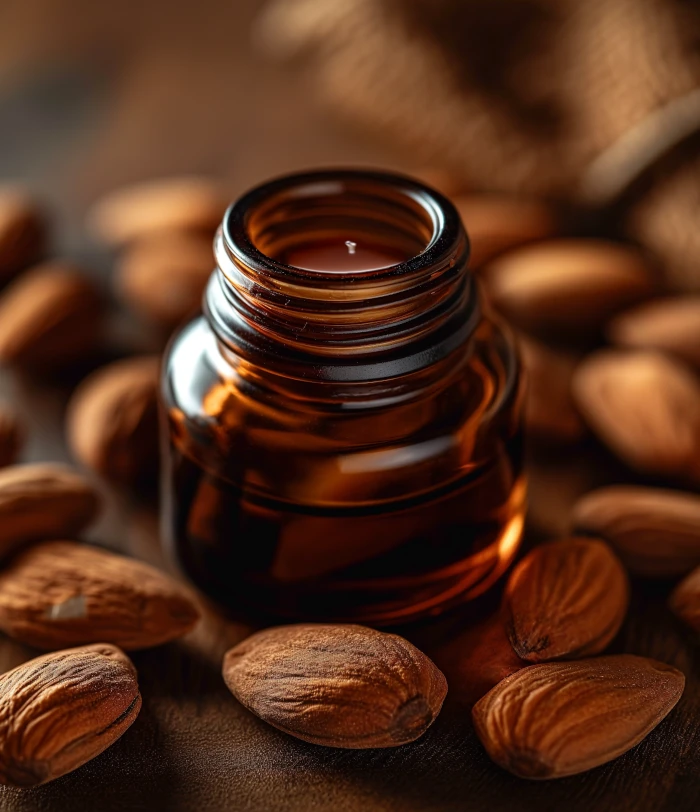
Mandelic Acid Is Effective for Treating Acne
Acne is caused by sebum (oil), bacteria, dead skin cells clogging pores in the skin, and inflammation.
Using skincare products containing mandelic acid can help reduce acne breakouts by:
- Removing dead skin cells that may otherwise clog pores and lead to acne
- Increasing cell turnover, which reduces the appearance of acne
- Keeping acne-causing bacteria at bay due to its antibacterial properties
- Minimizing skin inflammation (since inflammation is required for acne to form)
- Dissolving sebum (oil) build-up within pores. It works deep into pores to clear them and is often used on blemish-prone skin.
Generally, AHAs are water-soluble, meaning they cannot penetrate pores to remove oil build-up.
However, mandelic acid is more oil-soluble compared to other AHAs (such as glycolic acid) as it contains an aromatic ring in its chemical structure. This property allows it to enter pores and unclog the trapped sebum.
Study3 from 2015 investigated the effectiveness of a 30% mandelic acid peel on acne vulgaris in 15 patients. Improvements in acne lesions were noted in all patients in the study throughout six peeling sessions (with an average improvement of 53%).

What Skin Type Is Mandelic Acid Best Suited For?
Mandelic acid is an excellent choice for those with oily and acne-prone skin and is also suitable for all skin types.
Even people with sensitive skin and rosacea can benefit from mandelic acid as it is much more gentle on the skin than other AHAs. People who experience irritation with other AHAs can use mandelic acid without problems.
This is likely due to mandelic acid being a much larger molecule than other AHAs, which means it penetrates the skin more slowly.
Mandelic acid is also suitable for those wanting to fade hyperpigmentation (such as melasma and dark spots) due to its ability to increase cell turnover rate.
This study4 found that the most common side effects during six treatments of a 30% mandelic acid peel were burning and erythema (redness), which completely subsided over a few hours. Some of the patients also experienced dryness of the skin. However, the mandelic acid peels were well tolerated overall, and no patients developed post-inflammatory hyperpigmentation, flare-up of acne, photosensitivity, scarring, or allergic reactions.
Does Mandelic Acid Cause Purging?
Mandelic acid and other active ingredients (mainly chemical exfoliants and retinoids) that trigger skin cell turnover rate can cause skin purging, which appears as various types of inflammatory acne.
The reason that purging happens is that as your skin is exfoliated, acne formation is sped up. As new cells are brought to the surface, all the build-up underneath the surface of your skin comes to the surface, too, and forms a head.
Purging doesn’t involve new pimples forming using a new skincare ingredient. Instead, these pimples were already there, but a purge speeds up their formation.
I know that acne is the last thing you want to experience when you want to get rid of the breakouts you’re already dealing with. But some good news: the acne during a purge doesn’t last as long as a regular breakout, and purges don’t go on forever.
Purges typically don’t last longer than 4-6 weeks (as this is how long it takes the pimples underneath your skin to come to the surface as your skin is exfoliated).
Does Mandelic Acid Help Acne Scars?
Yes. Mandelic acid can help fade the dark marks left by pimples or post-inflammatory hyperpigmentation.
This study found that a chemical peel consisting of 10% mandelic acid and 20% salicylic acid resulted in visible improvements in post-acne hyperpigmentation (six peeling sessions were conducted every fortnight over ten weeks).
The improvements in post-acne hyperpigmentation were better than those observed with 35% glycolic acid peels conducted over the same period in another group of patients.
The ability to fade post-acne hyperpigmentation (as well as other types of hyperpigmentation) is believed to result from the increased cell turnover and exfoliating properties of mandelic acid.
The study above also found that the same peel consisting of mandelic acid and salicylic acid led to a subtle decrease in the number of icepick and boxcar scars.
This study from 20135 suggests that mandelic acid stimulates the dermal fibroblasts in the skin to deposit more collagen, elastin, and glycosaminoglycans (through a mechanism that is yet to be determined) – thereby decreasing the appearance of icepick and boxcar scars caused by acne.
Related Story
You should use a chemical exfoliant directly after cleansing and before using your toner. Learn why:
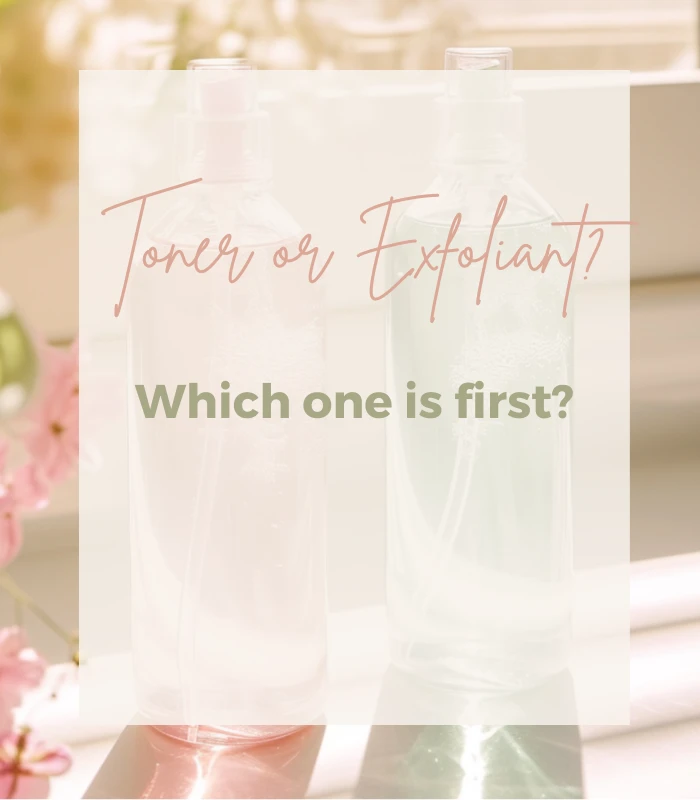
How Long Does It Take for Mandelic Acid to Work?
You’ll notice some initial skin texture improvements within a few days of introducing mandelic acid to your skincare routine (your skin will look smoother).
When using mandelic acid for acne, some people notice improvements to their skin within 1-2 weeks of using it. However, it’s likely to take up to 4-6 weeks to see substantial improvements to your acne.
This is because it takes some time for mandelic acid to clear out all the congested material inside your pores. Plugs forming underneath the skin will take about 3-4 weeks to come to a head as whiteheads or cysts.
Once the plugs underneath the skin surface are cleared (and new ones prevented from forming), your skin will become noticeably clearer.
Mandelic Acid vs. Salicylic Acid for Acne
Salicylic acid is one of the most well-known acne-fighting ingredients.
Salicylic acid is a beta-hydroxy acid (BHA), unlike mandelic acid, an alpha-hydroxy acid (AHA). It is the only true BHA and is naturally found in the bark of willow trees, although it is produced synthetically for commercial products.
Salicylic acid works similarly to mandelic acid to treat acne: it has anti-inflammatory and anti-bacterial properties that help treat already-formed pimples. Just like mandelic acid, salicylic acid can unclog pores by breaking down the bonds between dead skin cells, oil, and other gunk that can otherwise go on to cause breakouts.
However, the main difference between mandelic acid and salicylic acid is that they are oil-soluble compounds, which means they can penetrate much deeper into the pores.
So, which one of these skincare acids works better at treating acne?
Related Story

Research6 has found that salicylic and mandelic acids have almost equal efficacy in improving mild-to-moderate acne. However, salicylic acid treats non-inflammatory acne (whiteheads and blackheads) better. In contrast, mandelic acid is better at treating inflammatory acne (papules, pustules, nodules, and cysts).
Inflammatory acne tends to be more severe than non-inflammatory acne, and it is also more likely to cause acne scars such as post-inflammatory hyperpigmentation and pitting, so your skin might benefit from mandelic acid more if you tend to have inflammatory acne.
Although both acids may be equally powerful at treating acne, mandelic acid is much gentler than salicylic acid (owing to its larger molecular size, allowing it to penetrate the skin slower). If you have dry or sensitive skin, you may experience irritation while using salicylic acid (although some products are carefully formulated with hydrating and soothing ingredients).
Can You Use Salicylic Acid and Mandelic Acid Together?
You should be careful not to over-exfoliate your skin when using exfoliating acids, as doing so can damage your skin barrier and cause redness and irritation, dryness and flakiness, increased oil production, and acne.
However, unless you have very sensitive skin, you should be able to use salicylic acid and mandelic acid together in your skincare routine – plus, doing so is an effective way to treat acne.
This study7 found that a 20% salicylic–10% mandelic acid peel was safer and more effective than a 35% glycolic acid peel in treating noninflammatory and inflammatory acne lesions. After a 20-week salicylic acid-mandelic acid treatment program, patients reported significant improvements in:
- comedones
- papules
- pustules
- total acne scores
- post-acne hyperpigmentation
- icepick scars, and
- boxcar scars
Regarding side effects, the study above reported that the salicylic acid-mandelic acid peel was tolerable to all patients. 20% of the patients who received the salicylic acid-mandelic acid peel reported a burning or stinging sensation, and 15% reported skin dryness.
Best Skincare Products with Mandelic Acid
There are two main options for anyone wanting to incorporate mandelic acid into their skincare routine. Visit a dermatologist to receive treatments with a high-strength mandelic acid peel, or buy an over-the-counter skin care product containing mandelic acid that you can use at home.
Over-the-counter skincare products, usually serums and exfoliating toners, contain a lower concentration of mandelic acid than peels and are, therefore, much gentler on your skin – meaning they can typically be used daily.
By Wishtrend Mandelic Acid 5% Skin Prep Water
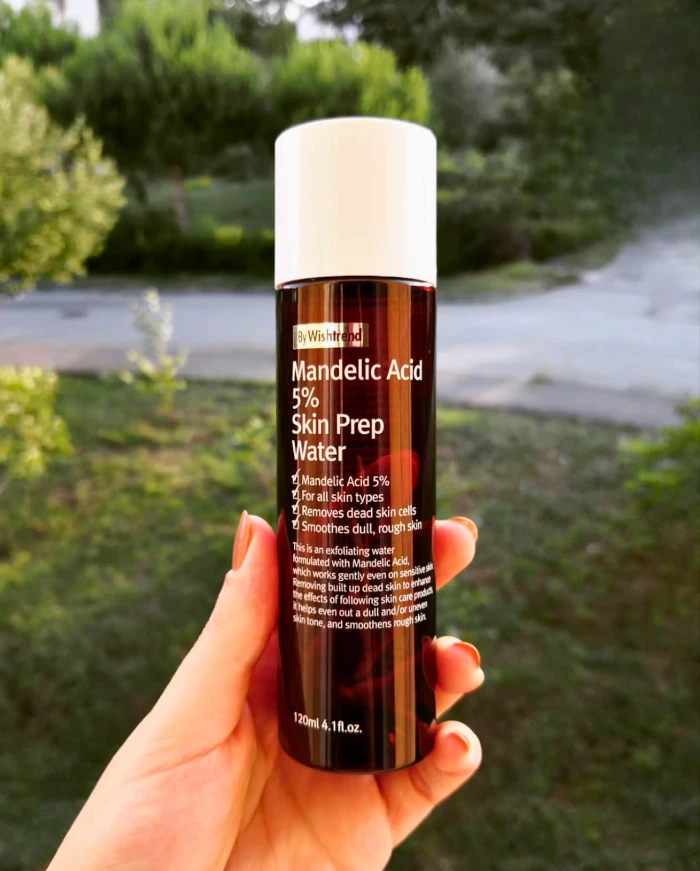
This is a hydrating and gentle exfoliator that can be used daily. It is formulated with 5% mandelic acid, so even those with sensitive skin can benefit from this product.
Aside from mandelic acid, this exfoliator also contains beta-glucan (hydrating and anti-aging), panthenol (AKA vitamin B5 – hydrating), licorice root extract (soothing), sodium hyaluronate (hydrating), and Centella Asiatica extract (soothing).
After cleansing, apply an adequate amount to your skin, avoiding contact with your eyes, and pat lightly for better absorption. If your skin requires more exfoliation, you can soak the exfoliator into a cotton pad and wipe your skin gently. Follow with hydrating toner and the rest of your skincare routine.
By Wishtrend recommends using this product 3-4 times weekly (2-3 times weekly if you have sensitive skin).
Be sure to always wear SPF while using this product. Any exfoliating acid that increases cell turnover will make your face more susceptible to ultraviolet (UV) radiation (even on days you don’t use them).
By Wishtrend Mandelic Acid 5% Skin Prep Water Ingredients List (last checked 2025)
Aqua(Water), Mandelic Acid, Butylene Glycol, Beta-Glucan, Panthenol, Glycyrrhiza Glabra Root Extract, Prunus Amygdalus Dulcis Fruit Extract, Sodium Hyaluronate, Centella Asiatica Extract, Sorbitan Sesquioleate, Sorbitol, Glycerin, Houttuynia Cordata Extract, Chlorphenesin, Dimethyl Sulfone, Arginine, Sodium Citrate, Carbomer, Ethylhexylglycerin, PEG-60 Hydrogenated Castor Oil, 1,2-Hexanediol, Natto Gum.
Ingredients referred from the Wishtrend website.
Active Humectant/Moisturizing Herbs
DR. WU Mandelik Intensive Renewal Serum
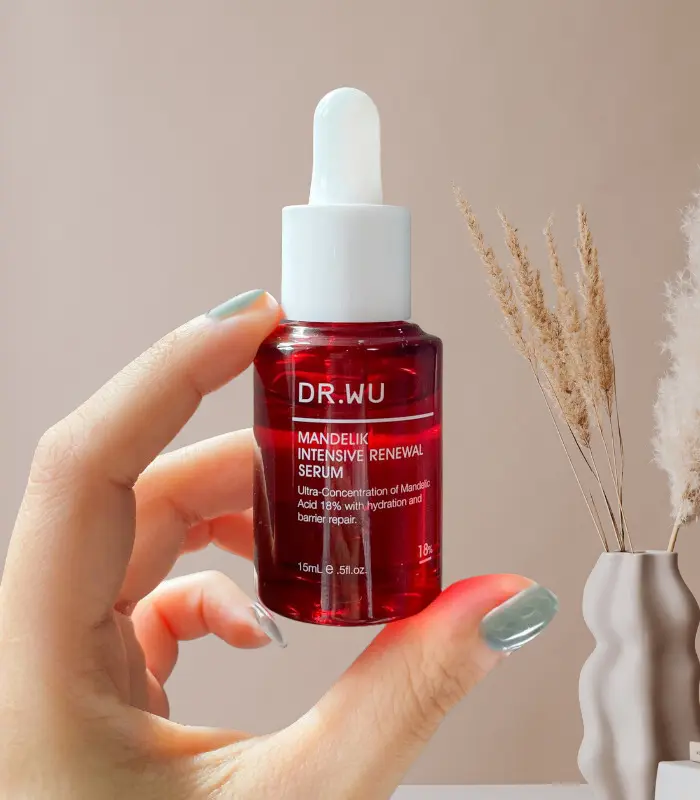
If you’re after a skincare serum containing mandelic acid, I recommend the DR. WU Mandelik Intensive Renewal Serum from the Taiwanese brand Dr. Wu. This serum works well at healing inflamed blemishes due to the 18% mandelic acid it contains (beta-glucan, panthenol, Centella Asiatica, and sodium hyaluronate).
Please read Mia’s in-depth review of the DR. WU Mandelik Intensive Renewal Serum.
Dr. Wu Intensive Renewal Serum With Mandelic Acid 18% Ingredients List (last checked 2025)
Aqua, Propylene Glycol, Mandelic Acid, Butylene Glycol, Triethanolamine, Beta-Glucan, Ruscus Aculeatus Root Extract, Panthenol, Centella Asiatica Extract, Sodium Hyaluronate, Hydrolyzed Yeast Protein, Disodium EDTA, Dipotassium Glycyrrhizate, Calendula Officinalis Flower Extract, Allantoin, Ammonium Glycyrrhizate, Aesculus Hippocastanum Extract.
Ingredients referred from INCIDecoder.
Humectant/Moisturizing Active Herbs Brightening
Show Me Proof
- Jartarkar, Shishira R., Bugude Gangadhar, M. Mallikarjun, and P. Manjunath. “A randomized, single-blind, active controlled study to compare the efficacy of salicylic acid and mandelic acid chemical peel in the treatment of mild to moderately severe acne vulgaris.” Clinical Dermatology Review 1, no. 1 (2017): 15-18. ↩︎
- Jartarkar, Shishira R., Bugude Gangadhar, M. Mallikarjun, and P. Manjunath. “A randomized, single-blind, active controlled study to compare the efficacy of salicylic acid and mandelic acid chemical peel in the treatment of mild to moderately severe acne vulgaris.” Clinical Dermatology Review 1, no. 1 (2017): 15-18. ↩︎
- Garg, Vijay Kumar, Surabhi Sinha, and Rashmi Sarkar. “Glycolic acid peels versus salicylic–mandelic acid peels in active acne vulgaris and post‐acne scarring and hyperpigmentation: a comparative study.” Dermatologic Surgery 35, no. 1 (2009): 59-65. ↩︎
- Dayal, Surabhi, Kirti Dudeja Kalra, and Priyadarshini Sahu. “Comparative study of efficacy and safety of 45% mandelic acid versus 30% salicylic acid peels in mild‐to‐moderate acne vulgaris.” Journal of cosmetic dermatology 19, no. 2 (2020): 393-399. ↩︎
- El Refaei, Asmaa M., Hany A. Abdel Salam, and Neveen E. Sorour. “Salicylic–mandelic acid versus glycolic acid peels in Egyptian patients with acne vulgaris.” Journal of the Egyptian Women’s Dermatologic Society 12, no. 3 (2015): 196-202. ↩︎


